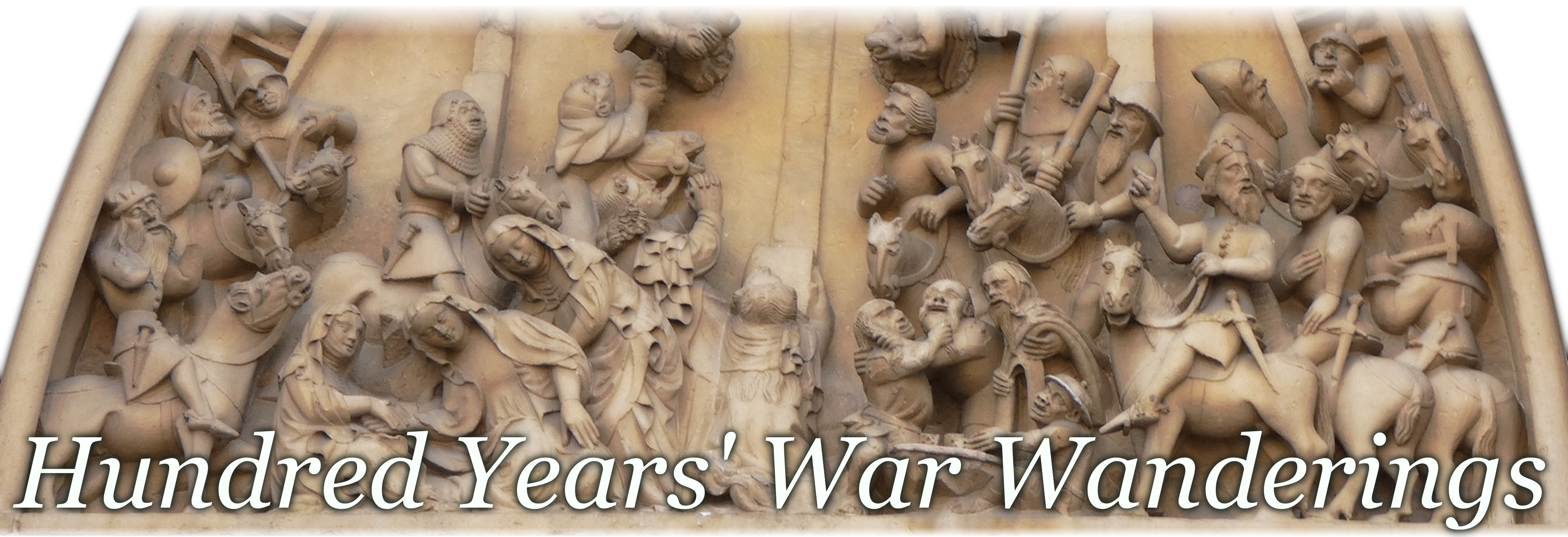Provins, in the old County of Champagne, is a pleasant, sleepy town, close enough to Paris to be the object of many an evening drive, with agreeable places to eat and drink and the well-preserved town walls to stroll along afterwards. When those impressive walls were new, Provins was a major trading centre, minting its own coins, and attracting merchants from throughout western Europe to its Fairs.

Despite its defences such a prosperous place attracted many attackers, eager to dominate trade and to deny it to enemies. In 1361 the town was seized by Charles the Bad, king of Navarre but retaken by the French sixteen years later.

In 1432 Provins fell again to an enemy, this time a raiding party of English and Burgundians. Although visitors were, until fairly recently, shown the brèche d’Anglais or ‘English breach’, a somewhat battered stretch of the ramparts where the tourist attraction “La Legend des Chevaliers” is now, the town seems in fact to have succumbed to an escalade – a sudden assault with ladders on the town walls. It is possible that the attack was preceded by a lightning bombardment, which targeted a weaker section of the walls, but it seems unlikely.

Across the town, on the northern ramparts is another battered portion of the walls, with a tiny sally-port known as the trou de chat. This is traditionally put down to the work of an earlier siege engine called ‘the cat’, although ‘the cat-flap’ or its medieval equivalent is a perfectly believable nickname for such a small, almost hidden gateway.

The trou de chat
In the early hours of Thursday 2nd October 1432, the Anglo-Burgundian raiders scrambled over the walls and into the sleepy town of Provins. It was by no means a walkover. For eight hours fighting raged around the town. The castle fell at about five that morning but the 500 strong French garrison, commanded by one Nicolas Girème, Commander of the Order of Malta, fought on, killing some six score of the attackers.
The news of the coup reached Paris, where one chronicler (a friend to the Anglo-Burgundian cause) noted “On October 2nd the English took the town and castle of Provins. They looted, stole, and murdered, as such people always do, and call it the usual custom of war.”

Other chroniclers recorded the names of the English and Burgundian leaders; a curious mish-mash of fanciful and misheard names. The magnificent Medieval Soldier database (at https://www.medievalsoldier.org/) helps us greatly here. The raid appears to have been led by Sir John (or Jehan) Raillart, of the Paris garrison. His troops included one Mondo (actually probably Mondoc or Mondot) de Lanssac, who later served in the English garrison at Gisors, and a Thomas Gerard, who had arrived in France in 1418 and served on until the 1440s. A Pierre d’Annay, apparently a Gascon, is also mentioned, who may be Perrin Dannay, an archer who had served under the Earl of Salisbury a few years earlier. A Richard Huçon, or Hyreton, seems to be lost to the fog of history, unless he is Richard Ireton, recruited as an archer in 1415.
Provins is well worth a visit. The ramparts alone render the town worthy of its status as a UNESCO World Heritage site but there is also the excellent Tithe Barn museum, which explains the towns trading roots. Towering above all is the castle, the Caesar Tower, which may also be visited. It is an imposing keep, surrounded by a strong, stone apron known locally as the Pâté aux Anglais which can be translated in a number of ways – the English pie, a block (of stone), or rather more believably, at least visually, the English ‘sandcastle’.

There is also a plaque on Saint-Quiriace’s church, recording the triumphal visit of Joan of Arc, but we can leave that for our Joan the Maid series.

